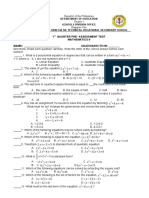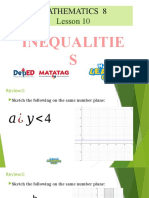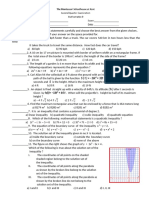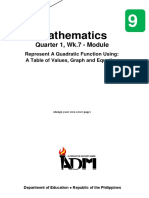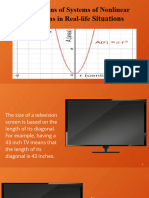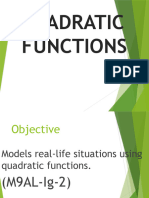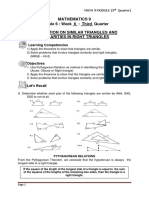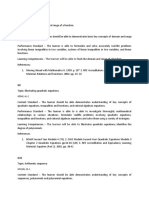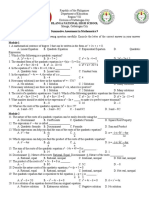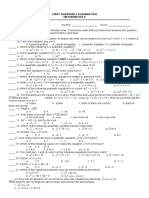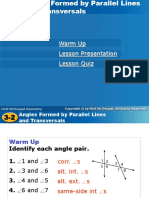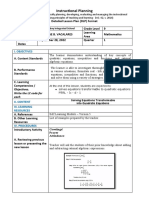0% found this document useful (0 votes)
272 views10 pagesG9 - Math - Q1 - Module 5
This document provides instruction on solving quadratic inequalities in one and two variables. It begins by explaining how to solve a quadratic inequality by finding the roots of the corresponding equality and determining which intervals satisfy the inequality. An example problem is worked out step-by-step. The document then discusses solving inequalities involving two variables by graphing the corresponding quadratic equation and shading the region where the inequality is satisfied. Two example problems are shown graphically. Finally, students are given activities to apply these concepts by determining if points satisfy given inequalities and graphing and describing the solution sets of other inequalities.
Uploaded by
Marti LeganiACopyright
© © All Rights Reserved
We take content rights seriously. If you suspect this is your content, claim it here.
Available Formats
Download as PDF, TXT or read online on Scribd
0% found this document useful (0 votes)
272 views10 pagesG9 - Math - Q1 - Module 5
This document provides instruction on solving quadratic inequalities in one and two variables. It begins by explaining how to solve a quadratic inequality by finding the roots of the corresponding equality and determining which intervals satisfy the inequality. An example problem is worked out step-by-step. The document then discusses solving inequalities involving two variables by graphing the corresponding quadratic equation and shading the region where the inequality is satisfied. Two example problems are shown graphically. Finally, students are given activities to apply these concepts by determining if points satisfy given inequalities and graphing and describing the solution sets of other inequalities.
Uploaded by
Marti LeganiACopyright
© © All Rights Reserved
We take content rights seriously. If you suspect this is your content, claim it here.
Available Formats
Download as PDF, TXT or read online on Scribd
/ 10





